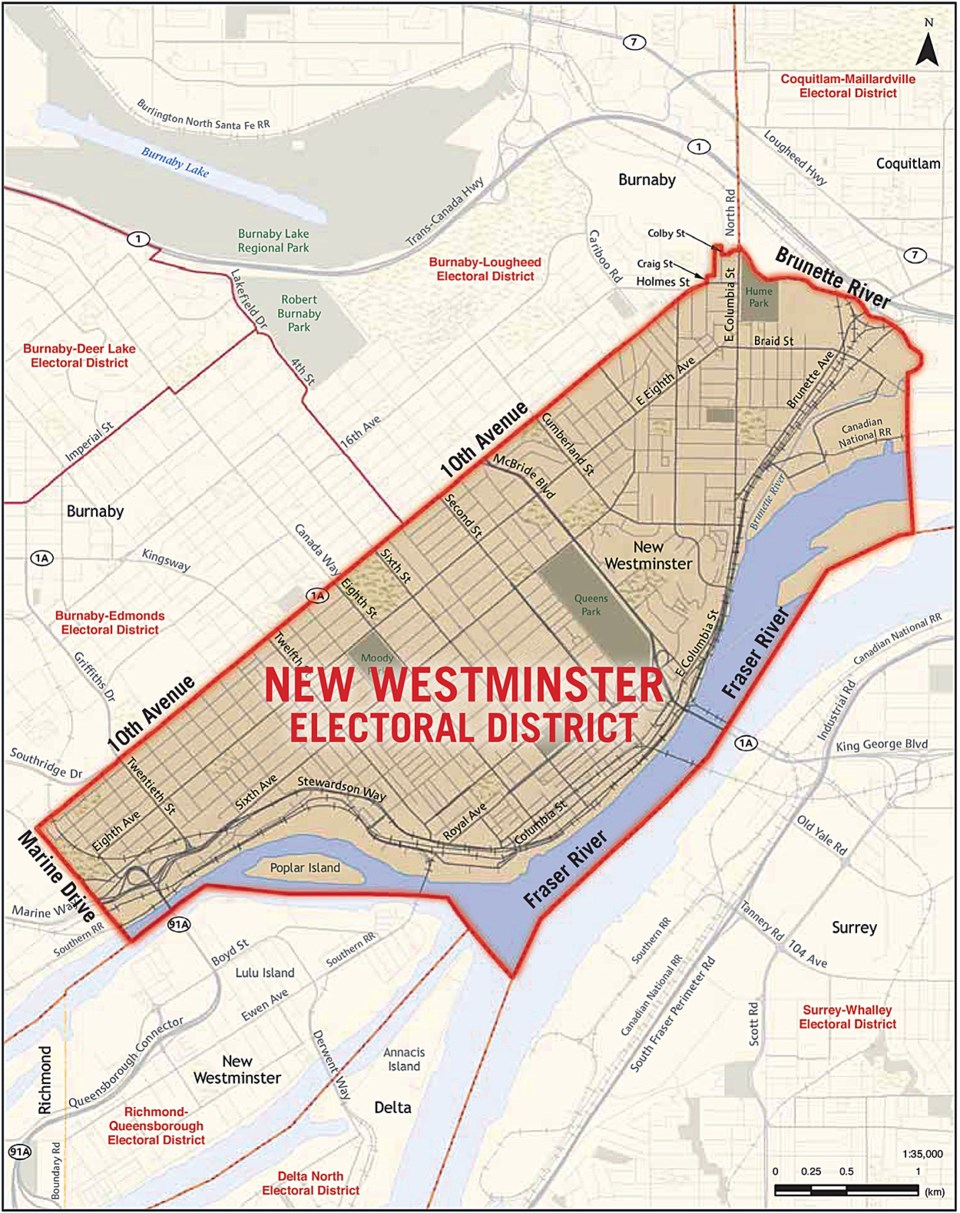BACKGROUND:
Aside from the 2001 provincial election, when the Liberals swept to power and only two New Democrats were elected to the legislature, New Westminster has a longstanding tradition of voting NDP. Since 1952, Royal City residents have elected the NDP (or its Cooperative Commonwealth Federation predecessor) in all but that one election.
In the May 2013 provincial election, six candidates – a Liberal, an independent, a Libertarian, a New Democrat, a Conservative and a Green vied to be New Westminster’s MLA. NDP candidate Judy Darcy came out on top and won the seat with 13,170 (48.84 per cent) votes, followed by the Liberals at 8,997 votes and the Greens at 2,252 votes.
Since the last trip to the polls, New Westminster has been divided into two ridings as a result of recommendations by the Electoral Boundaries Commission. Mainland residents will still vote in the New Westminster riding, but ‘Boro residents are now part of the newly created Richmond-Queensborough riding.
DEMOGRAPHICS:
According to the 2011 census, the population of New Westminster was 58,850 – with females slightly outnumbering males. The median age of residents was 41.9.
New Westminster is a diverse city, with 17,590 people speaking non-official languages and English being the mother tongue of 38,280 residents. The top six non-official languages in 2011 were: Filipino (Tagalog); Chinese (Mandarin); Chinese (other/unspecified); Korean; Punjabi; and Spanish. The closure of mills has forced the city to rethink its economic development initiatives, with health care and technology jobs taking on a greater role. Enticed by the changes underway in the city, many newcomers are moving into homes in the city’s established neighbourhoods and new condos. Whether the city’s growth and changing population affects traditional voting patterns remains to be seen.
HOT ISSUES:
Housing has toppled transportation as the top issue in New Westminster, where housing prices have soared, vacancy rates for rentals are low, families are in search of diversity of housing choice and homelessness on the rise. Like the rest of B.C., single-family homes in New West are quickly becoming unaffordable for many young families. With 44 per cent of New Westminster households being renters, many tenants are having to contend with low vacancy rates and rising rents.
Metro Vancouver’s recent homeless count found there were 25 per cent more homeless people in New Westminster than three years ago, slightly lower than the regional average of 30 per cent. By partnering with the province and non-profit groups, the city has provided housing for folks who are homeless or at-risk of homelessness. Still, the city and the region are hoping to make homelessness an issue in the election as they want the province to do more to address the rising number of homeless people.
While housing is a major issue, transportation continues to be a major concern of residents. New Westminster has been working with the province on plans for a replacement of the Pattullo Bridge, but TransLink and the mayors’ council on regional transportation, including representation from New Westminster, continue to seek the province’s financial support for transportation and transit issues in the growing region.
WHAT TO EXPECT:
Three high-profile candidates known for their hard work in the community are leading the pack in New Westminster. While Judy Darcy has made her mark on the city and served as the NDP’s health critic, the Liberals didn’t do too shabby in 2013 and Lorraine Brett is a longtime resident and volunteer in New West. The Greens haven’t been a threat locally in the past, but they didn’t have a high-profile candidate like Jonina Campbell, who has made a name for herself as a local school trustee. Given the number of green and orange signs popping up around town, we can’t help but think this could be one of the more interesting races to watch in B.C.


